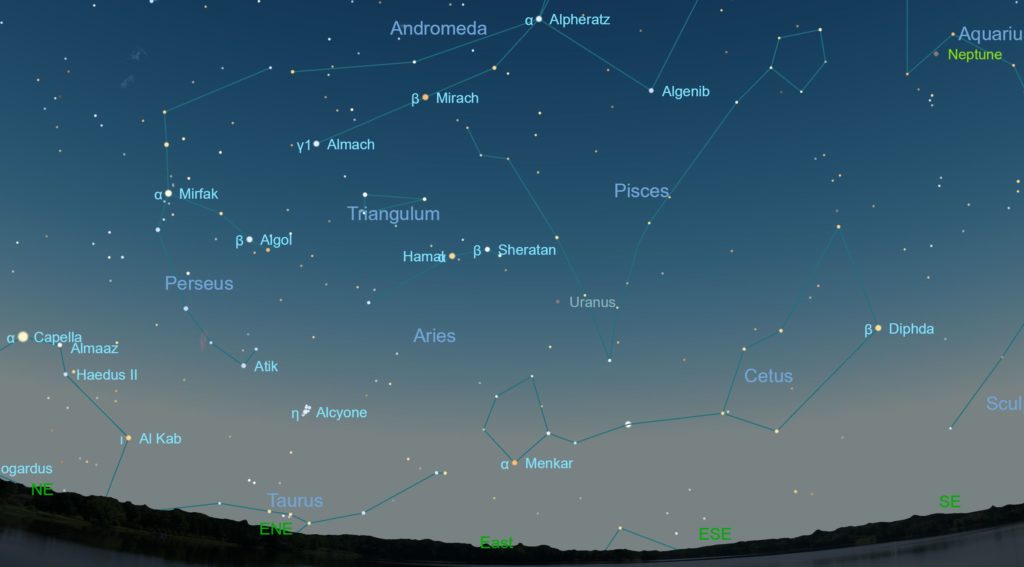
Take any three stars and they’ll form some kind of triangle. But there is only one constellation Triangulum. It’s a small but ancient star group surrounded by the larger constellations Andromeda to the north and west, Pisces to the southwest, Aries to the south, and Perseus to the northeast. While modest, Triangulum hosts many fine sights for stargazers on a northern autumn (or southern spring) evening. Look for it about 10º due south of the star Almaak (γ Andromedae) and just northeast of Aries [Read more…] about A Trek Through Triangulum
Share This: